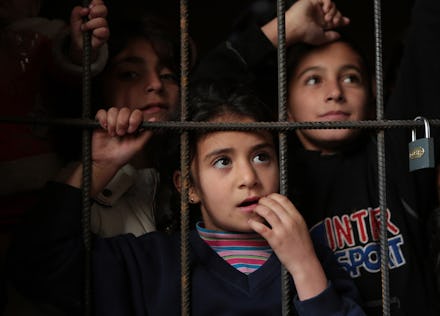What I Know About Immigration Reform 2013, As a Refugee

According to a new UN report, the number of refugees around the world has hit a 19-year high, with more than 45 million refugees and internally displaced people worldwide. The crisis in Syria alone has generated 1.6 million refugees, many of whom are in dire need of aid. The international community must take steps to assist those who have been displaced and are in need. The United States must lead an effort to find practical solutions for this problem, namely by increasing aid and setting a higher ceiling for refugees in 2014.
2012 was a truly heartbreaking year for many millions of families throughout the world. The UN’s 2012 Global Trends report stated that an average of 23,000 people a day were displaced from their homes last year, amounting to 28.8 million by the end of 2012. The highest levels of internal displacement were concentrated in conflict areas such as the Democratic Republic of Congo and Syria.
These conflicts appear to have no end in sight, and each day brings new horrors for those caught in the fighting. Apart from these conflicts' immense human toll, one of the real tragedies of these conflicts is the apathy that has grown in regards to them. The international community has grown numb to the tragedies that are unfolding before its eyes. The conflict in the Congo, which is a continuation of the genocide in Rwanda remains under reported. It is simply not enough for us to close our eyes to these tragedies and show remorse a decade later.
The Syrian refugee crisis also poses a significant challenge. The number of Syrian refugees has increased rapidly from 270,000 people in 2012, to nearly 2 million people in 2013, with some estimates that the number will rise to 3 million by the end of the year. The majority of these refugees have fled to neighboring countries such as Jordan, Turkey and Lebanon. There are also as many as 4.25 million Syrians who have been displaced within the country.
Children living as refugees are often permanently damaged. In an interview published by Al Jazeera, Syrian psychologist Khalil Yosef discussed the impact the war has had on Syrian children. "Most symptoms they have are aggression, sleeping problems, and speech problems like stuttering — not being able to say words correctly. I saw many children faint in front of me because they don't eat properly."
While a political settlement has not been reached, there is a serious need for both aid and resettlement, especially as winter approaches. The United Nations has made an appeal for $4.4 billion in urgent humanitarian aid to help Syrians — the largest request for aid in history — yet it appears far from reaching this goal.
The U.S. has done its fair share of good. Historically, the United States has played a significant role in resettling refugees, with more than 3 million refugees coming to the country since 1975. In 2012, the United States accepted more individuals for resettlement than any other country in the world. The U.S. also remains the single largest contributor of humanitarian assistance for Syrian refugees, including a new promise of $815 million in aid. These are positive steps, but more can be done to help get these refugees resettled.
Before the start of each fiscal year, the president consults with Congress in order to set an overall refugee admission ceiling. This ceiling is not a firm commitment as to the number of actual applications approved, but a flexible target that is often not met in terms of actual approvals. The refugee ceiling for 2012 was set at 76,000 but only 58,238 refugees were actually admitted. That is almost 18,000 unfilled spots.
Despite the global crisis, the U.S. set its 2013 refugee ceiling at 70,000 — 6,000 fewer than 2012. At a time of global crisis in dire need, how does this policy make sense? How can we leave women and children in such miserable conditions when we have the means and resources to resettle them?
There must be a concerted effort to not only meet the refugee ceiling in its entirety, but to increase it for 2014 to address this crisis. An increase in the ceiling would help save lives and also assist the UN in processing more refugee applications. Currently the UN processes refugees at a rate commensurate with the numbers the United States will accept. If the US acts to increase its target, the UN will streamline its process and get women and children out of the cold and into safety.
Normally I am not a proponent of American exceptionalism, but in this case the United States remains unique among all nations in the world in its ability to accept and assimilate large numbers of refugees. As someone who came to this country as a refugee, I can state that America truly is one of the most open and accepting societies for immigrants, particularly in contrast to the xenophobia that has been on the rise in Europe over the last decade.
Desperate times call for decisive measures. An increase in the refugee ceiling coupled with creative moves to increase aid and international cooperation would make a world of difference. These steps would not require a massive increase in budgetary requirements, nor are they as daunting as passing comprehensive immigration reform. These refugees have already been the victims of wars, violence, and devastation. They cannot become victims of internal politics and international power games.
While the rest of the world attempts to get its act together, the Obama administration has the opportunity to make a meaningful difference in a relatively uncontroversial area. American history has long been defined by the concept of accepting the tired, the poor, the huddled masses yearning to breathe free.